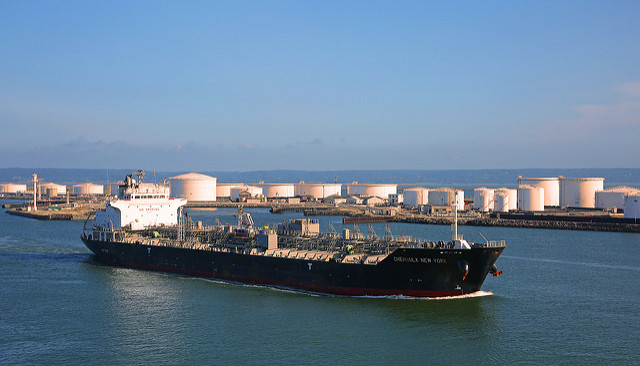Oil Stock Release: What Now?
The US has finally announced that it will be releasing 50MMbbls of crude oil from its Strategic Petroleum Reserve (SPR) to help lower prices. A handful of other countries have joined the US with this initiative. While releases are clearly bearish in the short term, the big unknown is how OPEC+ will respond.

Source: Flickr
What was agreed?
The US has announced that it will release 50MMbbls of crude oil, with 32MMbbls coming in the form of an exchange. The remaining 18MMbbls will be advanced mandated sales. Deliveries for the exchange will take place between 16 December 2021 and 30 April 2022. This crude oil will have to be returned in calendar years 2022, 2023 and 2024 at a premium. The longer the return period, the higher this premium will be. It appears as though the premium will be in terms of volume rather than USD. The notice for the18MMbbls SPR sale will only be released by 17 December at the earliest.
Other countries included in the coordinated release include China, India, Japan South Korea and the United Kingdom. Exact volumes and release dates are not known for all countries, but the latest reports suggest that China will release at least 7MMbbls (and potentially up to 15MMbbls). India will look to make 5MMbbls available, Japan is reportedly looking to release 4.2MMbbls, Korea possibly around 3.5MMbbls and finally the UK will release 1.5MMbbls. As a result, in total it appears as though at least 71MMbbls of crude oil will be released from government SPRs. This is equivalent to around 74% of daily global oil consumption in 2021.
This is a sizeable release, and it exceeds the 60MMbbls that was made available in the last globally coordinated release back in 2011, when there were supply disruptions in Libya. In fact, it would be the largest announced release since 1991.
IEA, DOE, Various reports
What does it mean for the market?
The SPR release was largely priced in and, despite prices rallying following the official US announcement, the SPR has been relatively successful. Back in late October, WTI was trading in the region of US$85/bbl, whilst Brent was close to US$87/bbl. However, the SPR noise over the last few weeks has been successful in seeing the market trade lower. WTI is back below US$80/bbl, whilst Brent is trading in the low US$80s. Had it not been for this noise, it’s likely that the market would have continued to trend higher, given the bullish sentiment that had been in the market. At least now the market is aware that there is a price level that key consuming nations will not tolerate.
Saying that, the release from the US could have had more of an impact had it been a pure SPR release, or at least if pure sales made up a larger share of the total release. Given that the bulk of releases will happen under exchange means that this oil will need to be returned to the SPR. In addition, the bulk of the delivery window falls during a period when the global market is expected to be better supplied.
We have left our price forecasts for the remainder of this year and next year unchanged. We still expect ICE Brent to average $81/bbl in 4Q21 and US$76/bbl over 2022.
What next?
The next steps with regard to these releases will be getting the official numbers and delivery periods from other countries taking part. We will also need to see what the uptake is like for this oil. If the supply situation does improve going into 2022 as expected, demand for this oil may be fairly low. In addition, given that oil will need to be returned with a premium, this may turn some off from participating in the exchange.
However, more importantly is how OPEC+ will react to this coordinated release. The group could potentially freeze any further production increases in order to try to offset the release. This may only push the US to take further action. OPEC+ next meet on 2 December, and it is likely they will decide then if any changes to the deal are needed. Our view is that it will really depend on price action between now and the meeting. If prices remain near current levels, the group will likely continue with its plan to increase output by 400Mbbls/d per month. However, if we see prices moving towards the low US$70s for any reason ahead of the meeting, they may very well decide a pause is necessary. Going this route does leave the potential for more volatile markets, with it likely leading to growing friction between OPEC+ and the US.
If this SPR release does not have the desired impact, we could always see further action. The US could decide on making additional releases or potentially putting a ban on crude oil exports in place. However, we think the latter option is unlikely. While a ban may weigh on WTI prices, it will be bullish for Brent. Ultimately US gasoline prices are influenced more by Brent than WTI.
Disclaimer: This publication has been prepared by ING solely for information purposes irrespective of a particular user's means, financial situation or investment objectives. The information ...
more



Prices STILL went up.